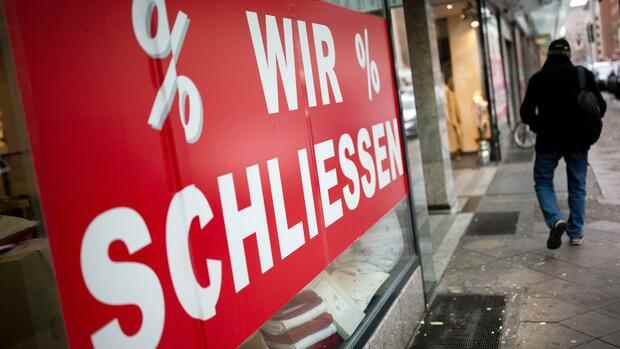Frankfurt The German credit insurers see the further economic development threatened by numerous risks. They therefore expect the number of corporate bankruptcies in Germany to rise again for the first time since 2009. “In the best case, we expect 15,500 bankruptcies, in the worst case up to 17,000 bankruptcies,” said Thomas Langen, chairman of the credit insurance commission in the German Insurance Association (GDV) and manager at the credit insurer Atradius on Thursday.
The immediate shock from the corona pandemic has been overcome, but not the medium and long-term consequences. “At the moment, the risks are constantly changing and mutually reinforcing: New corona waves, global delivery bottlenecks and rising prices are combined with high pressure to change and innovate,” emphasizes Langen.
Credit insurers therefore expect a trend reversal in corporate bankruptcies in 2022. It is likely that there will not only be more, but also larger bankruptcies with higher losses. “The claims from insolvency in the first half of 2021 were over four million euros – twice as high as in the same period of the previous year,” said Langen.
The comparatively low number of 15,000 corporate insolvencies in 2021 does not fully reflect the challenges facing the economy. Many companies have benefited from state aid. In addition, the legal framework for preventive restructuring of companies was created in 2021. In this way, some companies could have averted their bankruptcy, said Langen. Some companies have also given up their businesses without being included in the insolvency statistics.
Top jobs of the day
Find the best jobs now and
be notified by email.
Insurers see particular risks in the automotive industry
For increasing bankruptcies in the future speak that currently more restrictions in public life are necessary to contain the corona pandemic. That should hit the catering, travel and retail sectors hard again.
The credit insurers see particular risks for the automotive sector: The continuing shortage of microchips is leading to billions in sales losses for suppliers. At the same time, the transformation to electromobility requires high investments.
But there is currently a shortage economy in many other industries too, according to Langen. He also observes that high inflation is weighing on companies – even if many experts still consider the price increase to be temporary.
The risk of cybercrime has also increased in almost all industries. “Many companies still ignore the higher dangers in the home office,” complains Langen. Some companies have certainly already suffered damage that they have not yet discovered.
The insurers draw a positive balance for the protective shield for the supply chains of the German economy, which expired in the middle of the year. In return for a guarantee from the federal government, the credit insurers had continuously maintained their cover commitments of over 400 billion euros – even if the risks had increased significantly shortly after the corona pandemic flared up.
“The credit insurers have thus made a significant contribution to overcoming this crisis and strengthened confidence in economic stability,” emphasizes GDV General Manager Jörg Asmussen.
Trade credit insurance is on the rise
The credit insurers see it as the right step that the protective shield has expired and the insurance protection has returned to a purely market-based basis. Trade credit insurers are currently securing supplier credits amounting to 458 billion euros. That is five percent more than in the previous year and around 35 billion euros more than at the beginning of the pandemic.
According to GDV projections, premium income in the three lines of trade credit, surety and fidelity insurance will be around 1.9 billion euros in 2021, and benefits at 647 million euros. In trade credit insurance, however, the figures are only partially meaningful. As long as the protective shield was running, the insurers had to give 60 percent of the premium to the federal government.
With the remaining 40 percent, they had to cover ten percent of the damage and their costs. The credit insurers were not left with a profit, says Langen. In addition, some of the damage will not show up until 2022. At the same time, it was right that the industry worked on a solution during the crisis in order to prevent massive economic damage.
A trade credit insurance protects suppliers in the event that a customer in Germany or abroad cannot or does not want to pay the invoice. If there are payment defaults or delays, the invoice will be paid by the credit insurer.
According to GDV estimates, the credit insurers, which include Atradius, Coface and the Allianz subsidiary Euler Hermes, cover around 15 percent of German exports and thus make a significant contribution to the security of the German export economy.
More: The insurance industry makes high profits in the corona crisis – but is also struggling with an image problem
